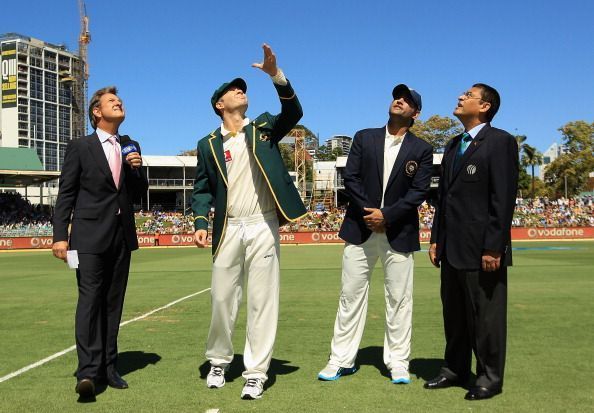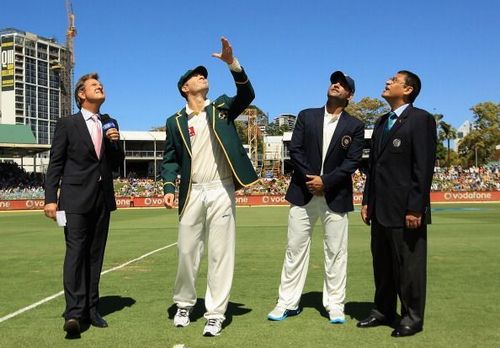
The Toss - Impact, history and type of coins used

The toss is an important factor in deciding the outcome of the game
Half an hour before the start of a cricket match, the toss of the coin glues cricket enthusiasts to the television screen. The toss is extremely vital as on many occasions the team winning the toss has an advantage. In modern-day cricket, especially in the sub-continent and in day and night ODI matches, the toss becomes much more vital.
The History
In the year 1744, in the first known code of published laws, the team winning the toss had the option to decide the pitch to be used as well as whether to bat first or to put the opponent in. This practice was changed in 1774 when this advantage of choosing the pitch as well as to bat first or to put the opponent in was given to the visiting team. Since the year 1809, the modern day practice of whether to bat first or to field has been left to the choice of the captain winning the toss.
Graeme Smith, the former South African skipper, holds the record for winning the maximum number of tosses in Test cricket. During his tenure as the South African skipper from 2003-2014, in 109 Tests as captain, Smith won 60 tosses. In ODIs, Ricky Ponting holds the record of winning the maximum number of tosses. Ponting captained the Aussies in 220 ODIs and won 124 tosses. Overall, Ponting holds the record of winning the maximum number of tosses in all the formats of cricket. He has won 170 tosses out of 324 matches as the Australian skipper with a win-loss toss ratio of 52.47.
If Smith has the distinction of winning the maximum number of tosses in Test matches, another record which he holds is losing maximum tosses in his tenure as the South African skipper, 49 tosses. In ODIs, Stephen Fleming, the former Kiwi skipper, holds the record of losing maximum tosses. Fleming, in his tenure as a New Zealand skipper from 1997-2007, lost 112 tosses. He also holds the record of losing the maximum number of tosses in all formats, 156.
The Coin
The coin which is used for the toss is usually made out of nickel or alloyed metal. Usually, during a bilateral series, the currency of the home team is used for the toss. However, there have been instances where special coins have been used for tosses, some of which are listed below:
Specially minted coin for India South Africa matches
On the occasion of the 146th birth anniversary of Mahatma Gandhi, BCCI launched a specially minted coin with the images of Mahatma Gandhi and Nelson Mandela as Heads and the words Freedom Series as Tails. This coin is used at the time of the toss in every India South Africa match.
“This is our small way to pay homage to Gandhiji as we celebrate his 146th birth anniversary. Mahatma Gandhi and Nelson Mandela proved to the world that freedom could be achieved through the path of non-violence – a true symbol of peace, truth and harmony. This coin will keep reminding everyone about the teachings of both the great leaders and also the strong bond India and South Africa share historically,” said BCCI Secretary Anurag Thakur at the time of launch of this coin.
Coin used for Sachin Tendulkar’s 199th Test Match
In Sachin’s penultimate Test match which was played at Eden Gardens at Kolkata, a special 10 gm gold coin was released by the Cricket Association of Bengal which had Sachin Tendulkar’s portrait as Heads with 'Eden Garden CAB Kolkata, 6th November 2013' embossed on the Tails side.
Coin used for Sachin Tendulkar’s 200th Test Match
Sachin Tendulkar’s farewell Test match saw a special gold coin being used for the toss. The coin had the image of Sachin Tendulkar’s face crafted with the words “SRT 200” on one side and the MCA logo on the other side. This coin was handed over to Tendulkar as a memento as he bid adieu to the game of cricket.